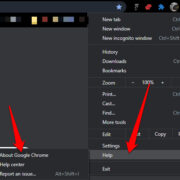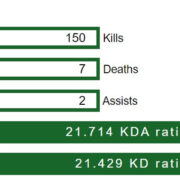Understanding the concept of Delta T, which is shorthand for ‘difference in temperature’, is paramount in fields ranging from physics and engineering to meteorology and HVAC (Heating, Ventilation, and Air Conditioning). It’s a basic yet crucial calculation that measures the change in temperature between two points in time or space. It’s the cornerstone for efficiency assessments, energy calculations, and much more. If you’re looking to grasp how Delta T plays a role in your operations and how you can calculate it easily, this guide is tailored for you.

Thermometer Readings
Study temperature changes by using a simple tool – a thermometer. This approach is beneficial for those who prefer a tangible, hands-on method.
- Gather two temperature readings.
- Take the initial temperature of the environment or object with a thermometer.
- After a certain event or time period, take the second temperature at the same location.
- Subtract the first reading from the second.
- Note the temperatures in the same unit (e.g., degrees Celsius or Fahrenheit).
- Perform the subtraction: Second Temperature – First Temperature = Delta T.
This method provides a visual and hands-on approach to understanding temperature change but relies on accurate readings and consistent measurement conditions.
Using a Digital Temperature Sensor
Accuracy and consistency can be significantly enhanced with a digital temperature sensor, which is ideal for precise measurements.
- Set up the digital temperature sensor.
- Install it according to the manufacturer’s instructions.
- Record two readings at different times.
- Ensure that the sensor records temperatures in the same units.
- Calculate Delta T.
- Use the digital readouts to subtract the first reading from the second.
Digital sensors increase accuracy but require a basic understanding of sensor operation and potentially higher costs.
Mathematical Formula
Applying a mathematical formula offers a more theoretical approach, perfect for situations requiring abstract calculations or planning.
- Identify the formula.
- Delta T = T_final – T_initial
- Insert your values.
- Determine your initial and final temperatures.
- Calculate.
- Perform the subtraction to find Delta T.
Using this formula allows for quick and straightforward calculations without physical measurements, but misunderstandings in inputting values can lead to errors.
HVAC Efficiency
In HVAC systems, calculating Delta T can help assess efficiency and performance by comparing the temperature of the air before and after it passes through the system.
- Take air temperature readings.
- Use a thermometer to measure the air temperature entering the HVAC system.
- Measure the temperature of the air exiting the system.
- Calculate the temperature change.
- Subtract the entering air temperature from the exiting air temperature to determine Delta T.
Providing insight into system performance, this approach is critical for HVAC maintenance, although it may require specific tools to access air passages.
Chart-Based Logger
Utilize a chart-based temperature logger for a visual representation of temperature changes over time, perfect for long-term monitoring.
- Set up the logger.
- Position the logger in the desired location and turn it on.
- Record data over time.
- Let the logger record at regular intervals.
- Interpret the data.
- Analyze the chart to observe temperature differentials.
Loggers capture data without human error but can be expensive and require regular calibration.
Spreadsheet Calculations
For multiple calculations or data sets, spreadsheets like Microsoft Excel or Google Sheets are invaluable for finding Delta T.
- Input your temperature data.
- Enter your initial and final temperatures in separate cells.
- Use formulas.
- Have the spreadsheet calculate Delta T by subtracting the initial from the final temperature.
Spreadsheets streamline calculations for large data sets but require basic knowledge of software use.
Graphical Interpretation
Graphical methods allow visual learners to grasp Delta T intuitively by plotting temperatures on a graph.
- Plot your temperatures on a graph.
- Use the X-axis for time and the Y-axis for temperature.
- Draw or identify your temperature points.
- Mark your initial and final temperatures.
- Calculate Delta T.
- Use the distance between points vertically to determine Delta T.
Graphs offer a quick visual, yet misinterpretation of scales or errors in plotting can lead to inaccurate conclusions.
Temperature Data Logging Devices
Data loggers automatically track temperatures over time and can calculate Delta T without user intervention, ensuring continuous and precise recording.
- Set up your data logger.
- Configure it according to your needs and start recording.
- Retrieve the data.
- After your required time period, download the data.
- Analyze for Delta T.
- Look for the largest difference between recorded temperatures.
Ideal for meticulous records and long durations, data loggers are a set-and-forget solution but require initial setup and potentially technical know-how for data retrieval.
Environmental Monitoring Systems
For larger-scale applications like agriculture or climate studies, an environmental monitoring system can provide Delta T along with other vital data.
- Install the monitoring system.
- Position the sensors and start the system.
- Collect temperature data.
- Record temperatures over your required period.
- Analyze the results.
- Use the system’s software to find the greatest temperature change.
Offering comprehensive data for informed decisions, these systems can be complex and expensive, often necessitating professional installation and interpretation.
Climate and Weather Apps
With advancements in technology, applications on your smartphone can provide local temperature changes, making Delta T calculations straightforward in a weather context.
- Download a reliable app.
- Ensure it records past and present temperatures.
- Consult historical data.
- Look for temperature at your points of interest.
- Calculate Delta T.
- Subtract earlier temperatures from more recent ones to find Delta T.
Apps make calculations easily accessible, though they rely on the app’s accuracy and may have limitations based on location or past data availability.
Calculating the temperature difference, or Delta T, is critical in many technical and non-technical fields, having diverse applications from optimizing machinery performance to monitoring weather patterns. Each method mentioned provides a unique way to measure Delta T and has its benefits. Instruments like thermometers and data loggers offer tangible and detailed measurements, while mathematical formulas, spreadsheets, and apps serve to process data with theoretical or pre-recorded values. Selecting the appropriate method depends on the specific context, availability of tools, desired accuracy, and the potential need for ongoing monitoring. Some methods are more suited to single point calculations, while others excel at tracking changes over time, offering insights for efficient operations, environmental analysis, or personal information. However, it’s important to consider the costs, both monetary and time-wise, as well as any technical expertise required in choosing the best method for calculating Delta T.
In conclusion, whether it’s for professional or personal use, understanding and calculating Delta T is a useful skill that can lead to better informed decisions and insights into the environments and systems we interact with. With various methods at your disposal, from traditional instruments to modern technology, you can find the one that best fits your circumstances and comfort level with the subject matter.
FAQs
-
What is Delta T?
Delta T, or the temperature difference, is the change in temperature between two points often used to measure performance, efficiency, or environmental changes. -
Why is Delta T important in an HVAC system?
Calculating Delta T in an HVAC system helps in assessing its efficiency and can indicate whether the system is heating or cooling as it should be. -
Do I need special equipment to calculate Delta T?
Not necessarily. While specialized equipment like digital sensors and data loggers provide accuracy, methods ranging from manual readings with a thermometer to using mathematical formulas or smartphone apps can also be utilized to measure Delta T. -
Can I calculate Delta T with just any thermometer?
Yes, as long as the thermometer provides accurate readings and you take both initial and final temperatures under the same conditions. -
Can I use Delta T measurements to save on energy costs?
Yes, by understanding and applying Delta T measurements, you can optimize systems for efficiency which can lead to energy savings, such as by adjusting an HVAC system to run more effectively.









